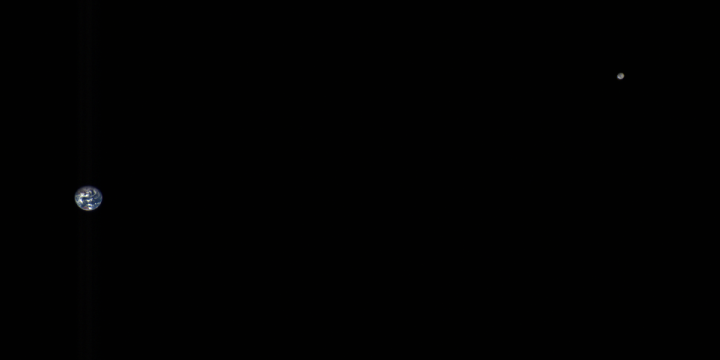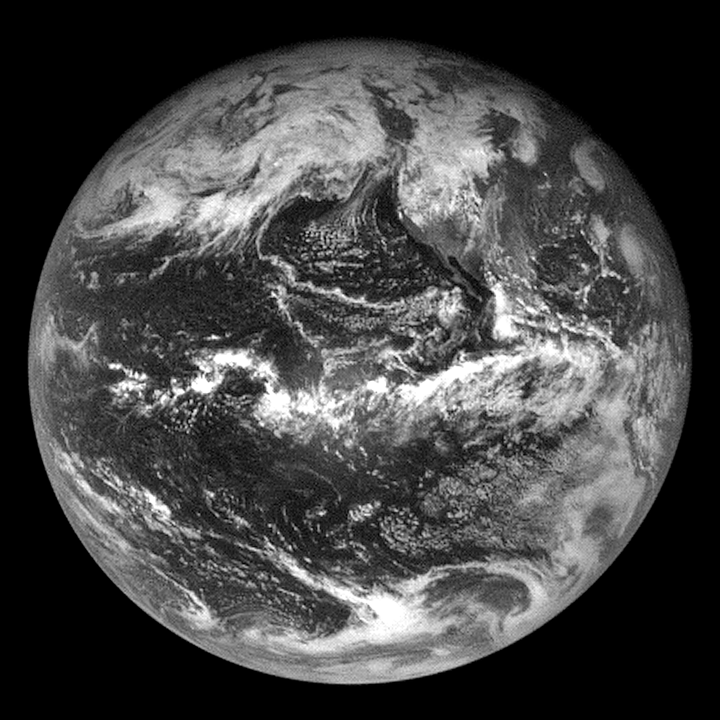


“It suddenly struck me that that tiny pea, pretty and blue, was the Earth. I put up my thumb and shut one eye, and my thumb blotted out the planet Earth. I didn’t feel like a giant. I felt very, very small.” —Neil Armstrong
The purpose of NASA’s OSIRIS-REx spacecraft—Origins, Spectral Interpretation, Resource Identification, and Security–Regolith Explorer—is to map and return samples from asteroid Bennu, a carbon-rich hunk of rock that might contain organic materials or molecular precursors to life. It is also an asteroid that could someday make a close pass or even a collision with Earth, though not for several centuries.
At the highest philosophical level, OSIRIS-REx is a mission to figure out where we came from, as asteroids are remnants from the formation of our solar system. But while the spacecraft might tell us some things about where we have been and where we are headed, it also can remind us of where we are right now.
On October 2, 2017, the MapCam instrument on OSIRIS-REx captured the data for a composite image (above) of the Earth and Moon. The spacecraft was approximately 5 million kilometers (3 million miles) from Earth at the time, about 13 times the distance between the Earth and Moon. (Click here to see the geometry of the shot.) Three images (different color wavelengths) were combined and color-corrected to make the composite, and the Moon was “stretched” (brightened) to make it more easily visible.

“Of all celestial bodies within reach or view, as far as we can see, out to the edge, the most wonderful and marvelous and mysterious is turning out to be our own planet Earth. There is nothing to match it anywhere, not yet anyway.” —Lewis Thomas
The second image was taken by NavCam 1 on September 22, 2017, as OSIRIS-REx completed an Earth gravity-assist maneuver—flying close enough to our planet to steal some momentum and speed up the craft on its way to Bennu. This is the view from 110,000 kilometers (69,000 miles) away. The original image was rotated so that the north pole is located at the top, and North America is visible on the upper right. Hurricane Maria and the remnants of Hurricane Jose are also visible in the far upper-right. NavCam images will track starfields and landmarks on Bennu to determine the spacecraft position during mission operations.
NASA images provided by the OSIRIS-REx team and the University of Arizona. Story by Mike Carlowicz.